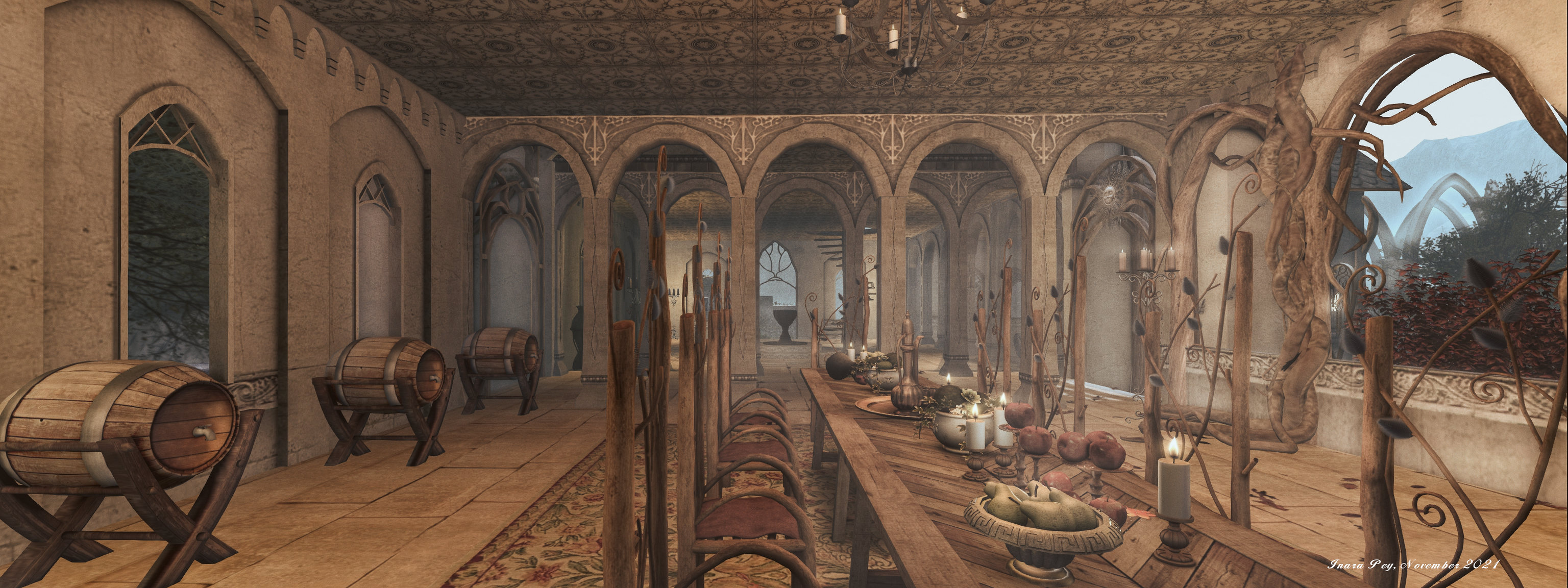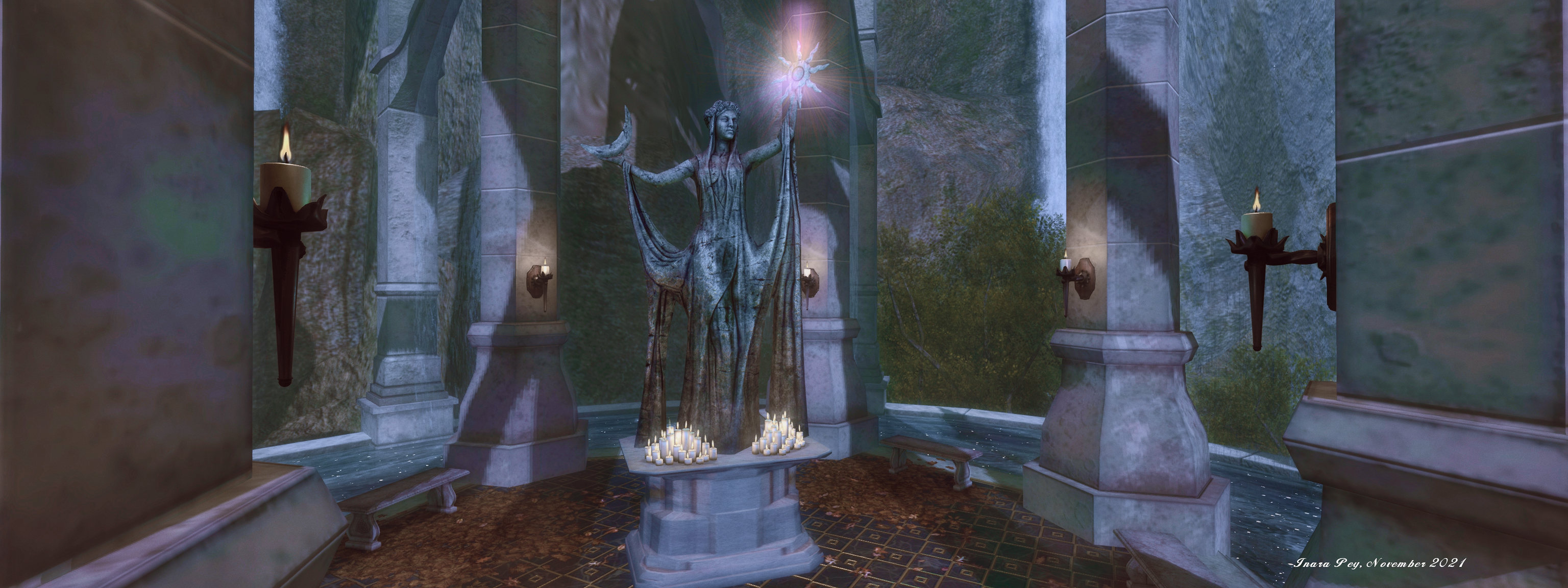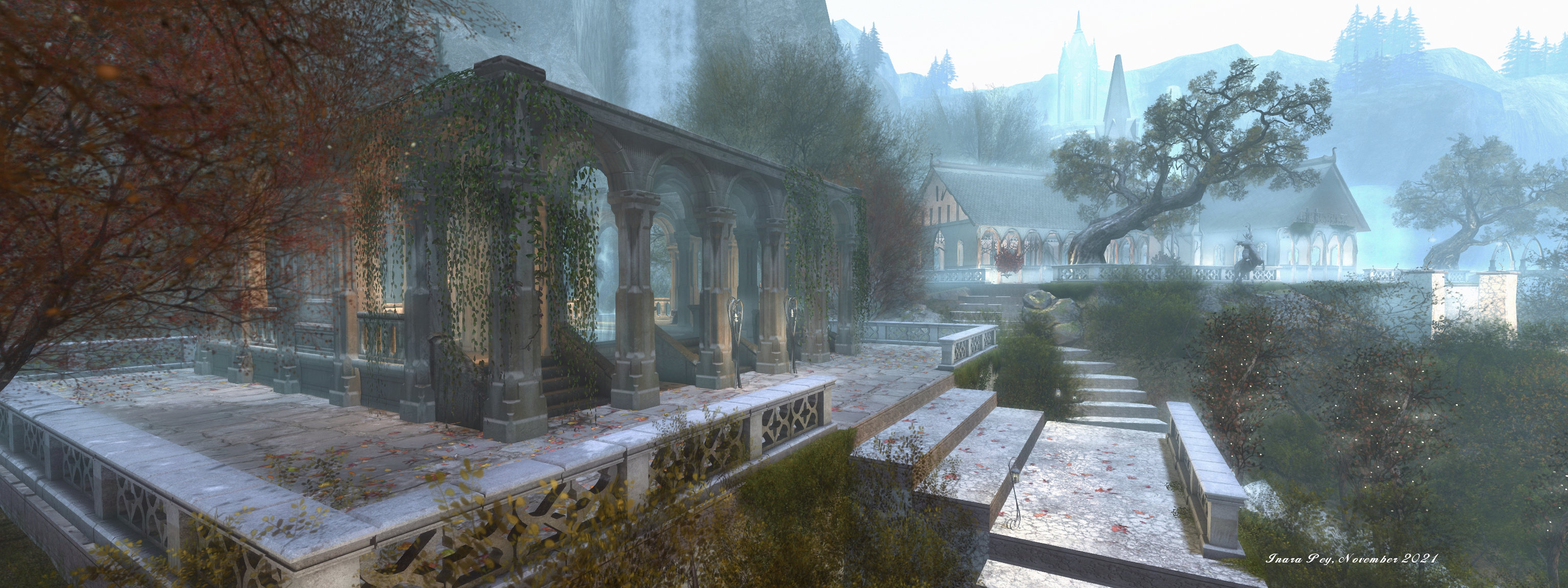
It has been a while since I’ve dropped in to a region designed by Camila Runo – the last was her take on the bayou lands of Louisiana back in May 2021 (see: A trip to the Bayou in Second Life), although my first encounter with her work came back in 2020 with the original Jambo! (A voyage to Africa in Second Life). Quite what caused the break in my visits I’ve no idea; but seeing Firith Galad a Forgotten Elven Realm listed in the Editor’s Picks of the Destination Guide immediately had me scurrying to pay a visit.
As anyone with an abiding love of Tolkien’s mythology (like me!) will know, Firith Galad is Sindarin (Grey Elven) in origin, and can be literally translated as “Fading Light” (Firith also being the last quarter of the Sindarin / elven year, and so give the time at which this build is available, that name also fits quite nicely). indeed, in respect of “fading”, a further layer of meaning might be found within the region’s name, as quick look at the About Land description reveals:
Surrounded by high mountains and cataracts lies Firith Galad, an ancient elven realm fallen into oblivion. The light is fading, winter is near …

Again, as those familiar with Tolkien’s mythology, the War of the Ring brought to an end the time of Elves, and the start of the Fourth Age, and the ascendancy of Man. At this time, many of the elves of Middle Earth departed into the West, and those left behind recognised they were doomed to fade with the passage of time. While no actual time-frame (before / after the War) is given, the title of the setting nicely fits with this idea of an elven enclave tucked away, perhaps high in Ered Luin (the Blue Mountains) of Lindon, the last remnant of their beloved Beleriand, and a place where they could escape the passing of time in the world around then, content to remain in isolation.
This is an ethereal setting caught in a ghostly light that, with the surrounding walls of rock, serves to separate the realm from the rest of the world, isolating it in a unique fashion whilst bathing it in a cool light mindful of winter, and in which the enclave is gently revealed as one approaches it. Set within a deep mountain valley, the setting is reached far path that clings to one side of the valley walls. It emerges from a tunnel – a hidden passage leading from the world beyond and into the valley. This tunnel is guarded by two gates bearing symbols of the gold and silver Trees of Valinor, Telperion and Laurelin, the first indication that in offering this build, Camila has perhaps cast her net of inspiration wider than Tolkien’s Lord of the Rings, (and certainly Peter Jackson’s interpretation of Tolkien’s world).

The path clings to the valley side as it runs from tunnel opening to a single stone bridge that gracefully spans the deep chasm of the valley to reach the enclave as it in turn hugs the far side of the valley’s steep walls. Here, beyond the banners bearing what might be an image of Telperion,, the enclave offers a tiered build, making use of shoulder and island of rock extending outward from the high peaks, with the core buildings reached via stair or bridge (or both), all sounds drowned by the thunder of the great falls that tumble to the valley floor far below.
Dominating the realm is a great house, placed at the top of a broad stairway and occupying a large stone-flagged square. Climbing the stairs towards it, visitors are greeted by the sound of harp music, the house itself a place of meeting, feasting, music, and seeing – a basin of water mindful of the one that once belonged to Galadriel sits within it, light glittering above its slowly shimmering water as it appears to wait its time to reveal the future to those who look into it.
More steps rise upwards from one side of the house, climbing to where a great stone edifice rises, curtains of water falling from some of its buttresses in time to the falls behind it. A single span of stone reaches across the pool that collects this water to reach the centre of the structure. This is home to a tall carven figure, undoubtedly Varda Elentári, known to the Sindarin as Elbereth Gilthoniel, as she holds aloft the vessels holding the light silver and gold light of the corrupted Two Trees of Valinor in vessels fashioned by Manwe and Aulë, that they might become the Sun and Moon of Middle Earth.

Elsewhere within the setting, one might find a meeting place, its horseshoe table doubtless the place of many councils and meetings of fellowships, while across a bridge from the arrival point and its gazebo stands a smaller hall, given over a place of learning / research / study, albeit one with furnishing that are perhaps of distinctly “Mannish” origins in difference to the furniture to be found elsewhere. Then, between this library and the main house there can be found a stone pavilion in which water drops from the high roof to enter a rectangular pool at the pavilion’s centre, what appears to the face of Ulmo, Lord of Waters, and second to Manwe and Elbereth in leadership of the Valar.
With a richness of trees and greenery as befitting the Sindar, who also settled in the forests of Middle Earth during the Second Age, Firith Galad is one of the well-executed settings drawn from Tolkien’s mythology. The attention to detail in referencing The Silmarillion far more than The Lord of the Rings, gives this setting a uniqueness that is hard to deny, and which is a delight to visit and spend time within for any Tolkienite. And even if your interest doesn’t run so deep, Firith Galad is nevertheless captivating in its presentation and sheer photogenic nature.

My utter respect to Camila for her work with this 80-days build.
SLuel Details
- Firith Galad a Forgotten Elven Realm (Farron, rated Moderate)